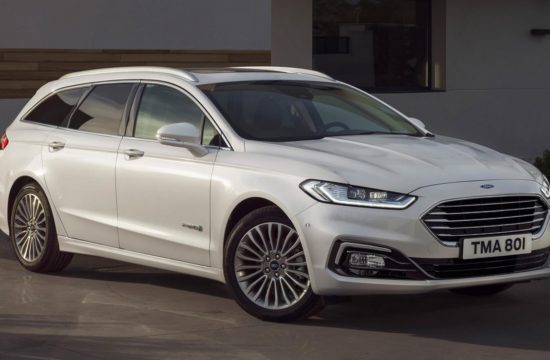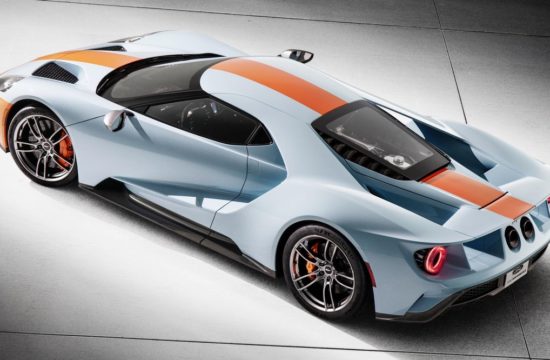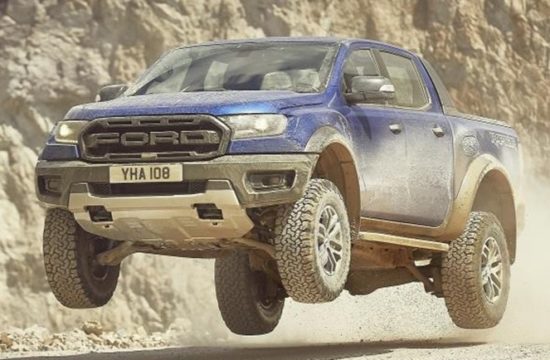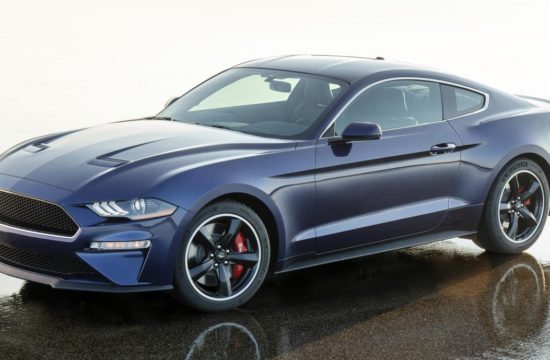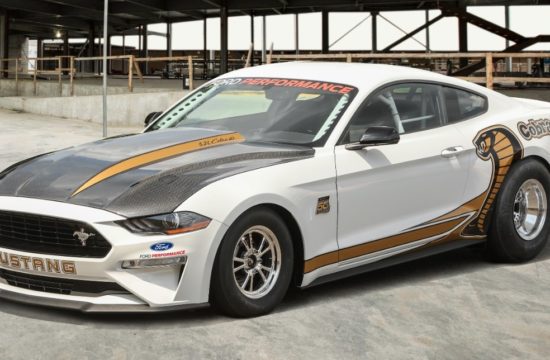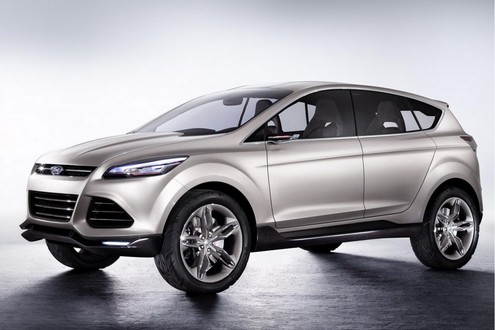
One of the most fascinating concept cars of 2011 NAIAS, so far, is this Ford Vertrek. Ford says the Vertrek is their vision for a new global utility vehicle, so whichever way you cut it, this is the next crossover by the company as a replacement for Escape, Kuga or whatever. Ford Vertrek concept is built on Ford’s global C-segment platform.
That is also a hint at this car’s future production plans, becasue as Ford has said many timed before they will make 2 million vehicles globally by 2012 on that platform.
The Vertrek is competely in tune with the time technically. It’s got a 1.6-liter EcoBoost engine equipped with Ford Auto Start-Stop technology that could deliver best-in-class fuel economy. And it’s also designed to be very aerodynamically efficient SUV. Ford preliminary data show that a production vehicle based around the Vertrek concept would be at least 5 percent more aerodynamically efficient than current comparable Ford North American and European models, such as the Escape and Kuga.
Speaking of design, it’s based on Ford’s distinctive European kinetic design styling but it’s not just a pretty face. Ford also promises great driving quality with outstanding levels of cargo space, trailer-tow and off-road capability for North America. This car will do everything that a crossover is supposed to do, which is everything!
Check out the press release after the pictures for more details…
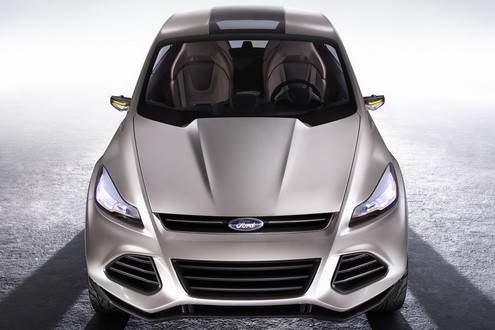

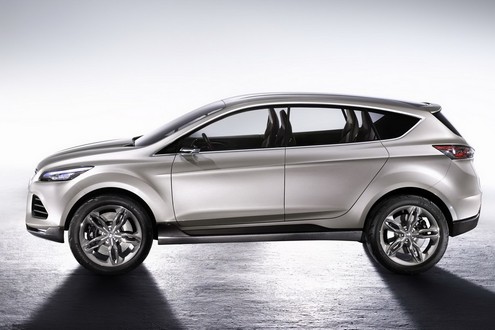

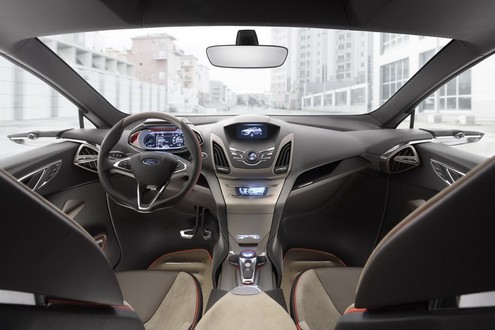
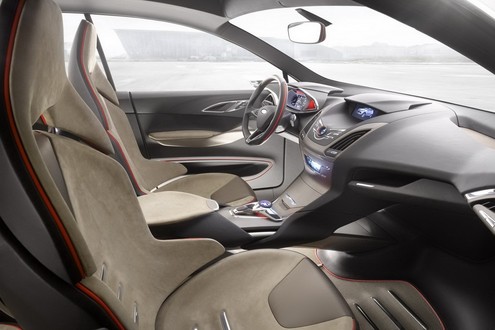
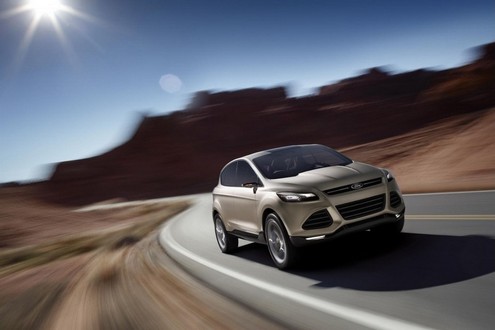
Kinetic design taken to the next level
The sporty, sleek Ford Vertrek concept builds on Ford’s global kinetic design philosophy. This distinctive and continually evolving design language is rooted in creating cars that appear to be in motion even when stationary, while at the same time communicating the engaging driving experience that Ford cars deliver.
The starting point is creating an athletic stance for the vehicle, almost like a runner in starting blocks poised and ready to burst forward. Other key elements include dynamic lines and taut surfacing, again conveying muscularity and athleticism.
Vertrek concept builds on these kinetic design fundamentals, underscoring its on-road characteristics and off-road capability.
“The Ford Vertrek concept is inspired by contemporary compact sport utility customers’ expectations and aspirations,” said J Mays, group vice president, Design, and chief creative officer. “It unites stylish design, world-class craftsmanship and outstanding capability to present a fresh vision that we believe will resonate globally.”
High-tech gasoline and diesel powertrain solutions
The Ford Vertrek concept shows how the vision of a next-generation, fuel-efficient compact SUV could become reality by extending the reach of the company’s growing EcoBoost™ engine and advanced turbo diesel common-rail direct-injection (TDCi) engine families while introducing Ford Auto Start-Stop technology.
EcoBoost is fundamental to Ford’s strategy to provide technologically advanced, high-output, smaller-displacement powertrains that deliver uncompromised performance and fuel economy. Ford EcoBoost engines deliver fuel economy gains of up to 20 percent and reduction of CO2 emissions of up to 15 percent, compared with larger, less-efficient engines.
In addition to turbocharging with direct injection, Ford powertrain engineers have enhanced EcoBoost’s technology capabilities by adding variable valve timing and precisely controlling all aspects of the engine. Ford has at least 125 patents on its EcoBoost technology.
Ford Vertrek concept features the highly efficient 1.6-liter four-cylinder Ford EcoBoost engine, giving the vehicle the power of a larger engine yet delivering significantly better fuel economy and CO2 emissions.
By 2013, 80 percent of Ford’s global nameplates and 90 percent of Ford’s North American nameplates will have an EcoBoost option.
Advanced diesel engines
Outside the U.S., Ford also offers customers a wide range of efficient and powerful Duratorq® TDCi engines, many of which could be applied to a future production model based on the Vertrek concept. Advanced diesel technology is especially vital in Europe – 96 percent of Kugas sold are diesel-powered.
The acclaimed 2.0-liter Ford Duratorq TDCi engine has recently been upgraded to deliver even higher efficiency with improved performance, fuel economy and refinement.
A more efficient combustion system enables greater peak power, significantly improved driveability with increased responsiveness and more pulling power at low engine speeds. It also delivers reduced fuel consumption and CO2 emissions. Depending on application, CO2 emissions are reduced by up to 7 percent compared to the previous 2.0-liter Duratorq TDCi engine.
Paired with the engine will be a fuel-saving six-speed transmission. By 2013, 100 percent of Ford vehicles in the U.S. will incorporate a six-speed transmission as part of the company’s commitment to leadership in fuel-economy performance in all vehicle segments.
Automatic shutdown of engine saves fuel
Another key enabler of enhanced fuel efficiency is the Ford Auto Start-Stop system. This system automatically shuts down the engine when the vehicle is at idle – at a stoplight, for example – and quickly restarts the engine when the driver wants to move off.
An Auto Start-Stop system can reduce fuel consumption and CO2 emissions by up to 5 percent in mixed driving conditions. In city driving and in heavy traffic with frequent stops, the savings could increase to as much as 10 percent.
The advanced new Ford Auto Start-Stop system has been carefully designed with customer comfort in mind, providing consistent starting and stopping performance that is smooth, quiet and seamless, requiring no changes in driver behavior. When the engine shuts down, the electronic control unit immediately prepares the engine’s systems for an instant restart. An integrated system of sensors is then used to detect when the driver performs an action that signals the intent to drive off, such as pressing the accelerator or clutch pedal.
As soon as the driver prepares to move away, the engine starts quietly and almost instantly; it takes the system only around 0.3 second to fire up the engine. The process is near imperceptible and happens before gear selection is completed. To support the increased number of engine starts, the starter motor is upgraded with a high-performance electric motor and a stronger pinion-engagement mechanism with reduced noise levels.
Smart Regenerative Charging
Advanced battery technology is required to ensure the main vehicle battery copes with the frequent charge-discharge cycles common with start-stop operation. Additional technologies ensure the battery is kept charged in the most efficient way.
A Smart Regenerative Charging system increases the alternator output when the vehicle brakes or decelerates. This converts the kinetic energy of the vehicle into electric energy without using additional fuel.
The “free” electric current is used to recharge the battery, so it can be used by the electrical systems at a later stage. This could be when the engine is switched off during a stop phase but also can be when the generator is operating in a less-efficient mode.
The battery has an advanced management system that continually monitors its status and communicates with the Ford Auto Start-Stop system, so that the regenerative charging feature can charge the battery in the optimal way. The Auto Start-Stop system knows how much battery charge is available, so that it can leave the engine running if the battery does not have a sufficient level of charge.



